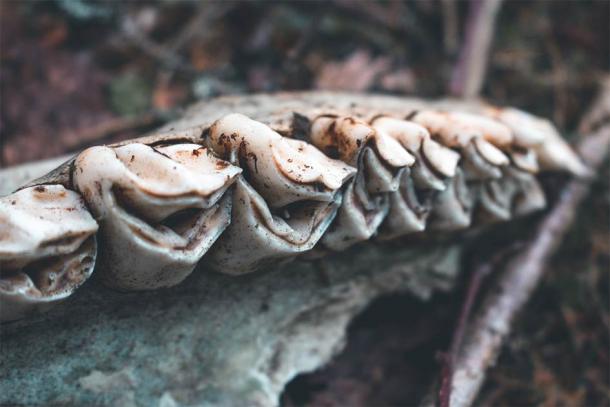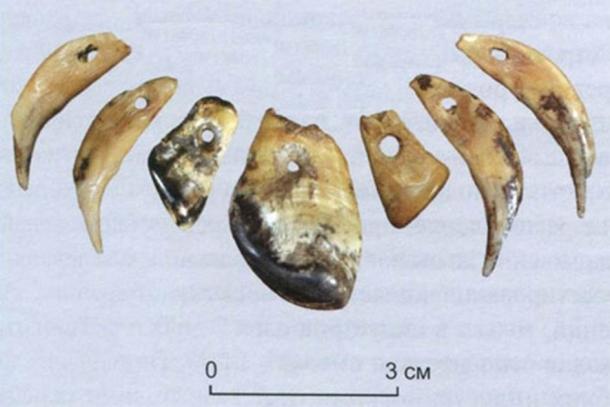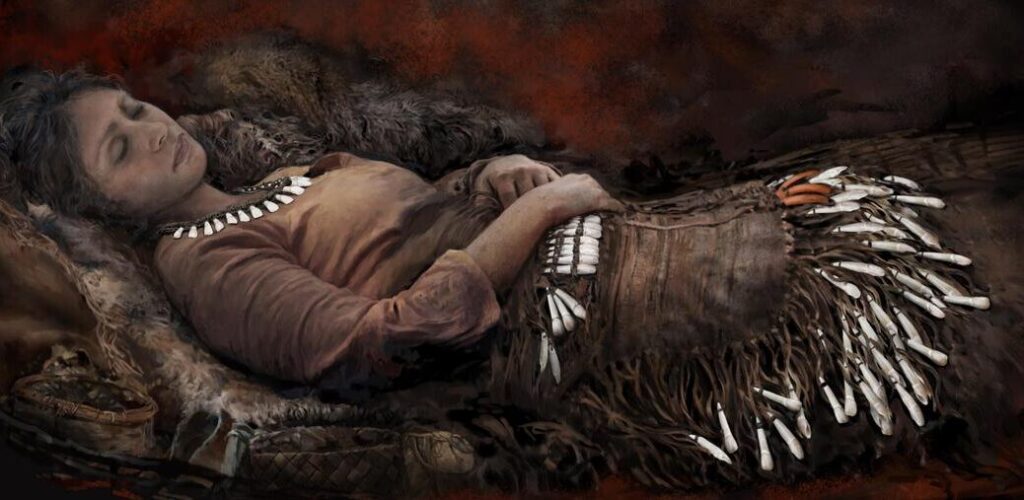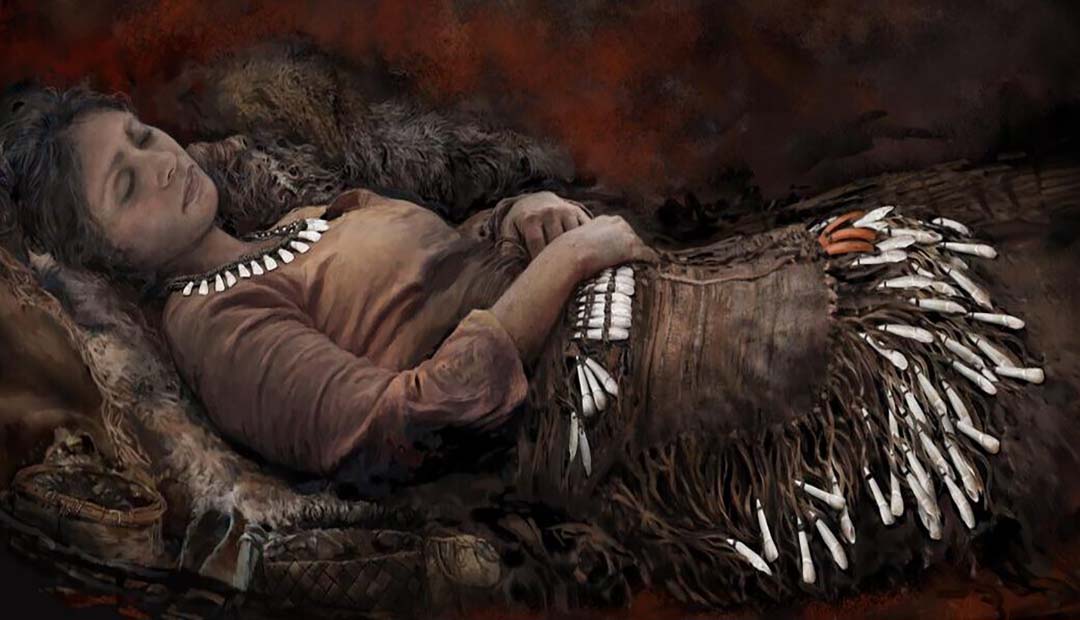Elk Teeth Offer Clues to Prehistoric Clothing in Russia
According to a statement released by the University of Helsinki, archaeologist Kristiina Mannermaa and her colleagues analyzed more than 4,000 elk incisors recovered from 8,200-year-old graves on an island in northwestern Russia’s Lake Onega.
Many of the graves contain an abundance of objects and red ochre, signifying the wish to ensure the comfort of the buried also after death.
Pendants made of elk incisors were attached to clothing and accessories, such as dresses, coats, cloaks, headdresses, and belts. Although no clothing material has been preserved, the location of the elk teeth sheds light on the possible types of these outfits.

A people of grooved elk tooth pendants
A study headed by archaeologist Kristiina Mannermaa aimed to determine who the people buried in outfits decorated with elk tooth ornaments were, and what the pendants meant to them.
The study analyzed the manufacturing technique of a total of more than 4,000 tooth ornaments or how the teeth had been processed for attachment or suspension.
The results were surprising, as practically all of the teeth had been processed identically by making one or more small grooves at the tip of the root, which made tying the pendants easier.
Only in two instances had a small hole been made in the tooth for threading, both of which were found in the grave of the same woman.

The toothpendants found in graves located in the Baltic area and Scandinavia from the same period as the Yuzhniy Oleniy Ostrov graves are almost exclusively perforated. Perforation is the surest way of fastening the pendant, but making holes in the narrow tip of a tooth is more laborious than grooving.
Archaeological and ethnographic research has shown that humans have been using decorations almost always and everywhere in the world, for several different purposes. To many indigenous peoples in Eurasia, including the Sámi communities, decorations have been and still are an important way of describing a person’s identity and origin.
They are not only aesthetic details but also connected to inter-community communication and the strengthening of intracommunity uniformity.
External elements such as ornaments can also influence the names which neighbouring groups use to refer to a community. Kristiina Mannermaa calls the people found in the burial site the people of grooved elk tooth pendants.
“Even though there are pendants made of beaver and bear teeth in the graves, the share of elk teeth in them is overwhelming,” Mannermaa says.
The highest number of elk teeth were found in the graves of young adult women and men, the lowest in those of children and elderly people. In other words, elk tooth ornaments were in one way or another linked to age, possibly specifically to the peak reproductive years.
Elk was the most important animal in the ideology and beliefs of the prehistorical hunter-gatherers of the Eurasian forest zone, and their limited availability made elk teeth a valuable material to ancient hunters.
Elks were not brought down very often, and not all members of the community contributed to hunting. It may be that a single individual was given all of the incisors of a caught elk.

Elks have a total of eight incisors, six permanent ones in the lower jaw, and two permanent canines in the shape of incisors. At times, corresponding deciduous teeth were also processed into ornaments.
The largest ornaments required the teeth of at least 8 to 18 elks.
The study was published in the Archaeological and Anthropological Sciences series. In addition to Mannermaa, Riitta Rainio from the University of Helsinki as well as Evgeniy Yurievich Girya, and Dmitriy Gerasimov from Peter the Great’s Museum of Anthropology and Ethnography contributed to the study.




